Camp Adelaide
Camp Ademac
Bonita Glen
Camp Bryerswood
Camp Carruthers Point
Camp Conestogo
Camp Doe Lake
Camp Ka-Ne-Do
Camp Kienuka
Camp Ma-Kee-Wa
Camp Orenda
Piper's Hill
Camp Tekahionwake (Teka)
Camp Tewateno
TRHAC
Camp Woolsey
Camp Wyoka
Camp Adelaide
Camp Adelaide was opened by Ontario Provincial Commissioner Victoria Clysdale on July 9
th, 1960. The camp, which is located on 500
acres of land on Black Lake in the Haliburton Highlands, was acquired in order to meet the needs of members in Central Area. Mrs. Adelaide
McLaughlin, the camp’s namesake, and her family were the primary benefactors of the camp. Their donation of $3,200 in 1959 began the Camp Adelaide
purchase fund. The rest of the funds were provided by Area donations and a loan from the province.
The camp went through major renovations from 1962-1979. A more recent project, Adelaide House, was completed in 1995. It houses the Camp
Director and Waterfront Staff, and was built in the same style as Doe Lake’s Chater House.

 Fig. 1: Camp Adelaide, 2005 | Ontario Council Archives, F61-l02608
Fig. 1: Camp Adelaide, 2005 | Ontario Council Archives, F61-l02608
Fig.2: Camp Adelaide Staff House - Built 1995 | Ontario Council Archives, F61-
l02517
Camp Ademac

The original Camp Ademac opened on July 27
th, 1961. The camp property was on 10 acres of land in Newtonville, Ontario, 40 km from
its present location in Blackstock. The camp moved to Blackstock in 1987, and held its Canvas Camping Opening two years later on September
24
th, 1989. The camp received support from the community for this event. A cottage was donated by the City of Oshawa and a picnic
shelter was built by one of the local service clubs. These permanent fixtures have helped Camp Ademac to host thousands of girls from the Oshawa
area.
 Fig. 1: Camp Ademac Crest | Ontario Council Archives
Fig. 1: Camp Ademac Crest | Ontario Council Archives
Fig, 2: Camp Ademac | Oshawa/Whitby This Week, Friday Edition, October 1989
Bonita Glen
Bonita Glen is Ontario’s oldest Guide-owned camp. The first camp which bore the name Bonita Glen opened in 1929, near King, Ontario. The camp
was named in honour of Blanche “Bonita” Hodgins, the first commissioner for Toronto. Her daughter, Estelle Wishart, was chief commissioner of Girl
Guides of Canada from 1948-1954.
In 1939 the camp was re-established on Lake Simcoe, near Hawkestone. “Bonita Glen II”, as it was known at the time, was host to a divisional
camp in July, 1941.
Bonita Glen has deep roots in Hawkestone history. The property was established as a landing for settlers in 1830 by Robert Hodges, and was “the
only port between Barrie and Orillia” according to an 1859 map of the area. The property was purchased by the Girl Guides from the estate of one
of Hodges’ descendants.

 Fig. 1: Bonita Glen - Postcard | Ontario Council Archives, F61-l02426
Fig. 1: Bonita Glen - Postcard | Ontario Council Archives, F61-l02426
Fig. 2: Bonita Glen - Cosy Site | Ontario Council Archives, F61-l02510
Fig. 3: Bonita Glen Entrance Gates, moved from original site, 1940-1950 - Postcard Ontario Council Archives, F61-l00977
Camp Bryerswood
Although Camp Bryerswood only opened in the early 1990s, it is part of a long tradition of camping in what was Trillium Area. Up until 1986,
Girl Guides from Essex, Kanata, and Webster Divisions had camped at Camp Wandalee and Camp Bosanquet. The divestiture of these two camps, largely
due to increasing vandalism of the properties, created a need in the community. So, in 1992, members from all three divisions united to purchase
the present Camp Bryerswood property. In the decades since, the camp has expanded its infrastructure and outdoor facilities thanks to fundraising
efforts, government grants, and support by Ontario Council.
 Fig. 1: Map of Area Surrounding Camp Bryerswood | Girl Guides of Canada
Fig. 1: Map of Area Surrounding Camp Bryerswood | Girl Guides of Canada
Camp Bryerswood Manual for Guiding and
Non-Guiding Activities, 2000
Fig. 2: Camp Bryerswood Crest, (post 1992) | Ontario Council Archives
Camp Carruthers Point
Camp Carruthers Point is one of Ontario’s oldest Girl Guide camps. Catherine Wells Bogart purchased the property from John Carruthers in 1927
to serve as a camp for Kingston area Guides. In 1931, she sold the camp to The Canadian Council of the Girl Guides of Canada. This property
occupies 6.5 acres of Lake Ontario waterfront in Kingston and has served the needs of local Guides and community groups for nearly a century. The
main cottage on the property was built in 1896 by John Bell Carruthers. This property now serves as a day camp and has hosted church groups, a
canoeing school, and international visitors.

 Fig. 1: A group of children wade in waters of Sand Bay at Carruthers Point | Newspaper Clipping |
Fig. 1: A group of children wade in waters of Sand Bay at Carruthers Point | Newspaper Clipping |
Donated to
Ontario Council Archives by Reta Currah
Fig. 2: Main cottage – Camp Carruthers Point, 1999 | Ontario Council Archives, F61-I03050
Camp Conestogo
Camp Conestogo opened on January 2
nd, 1958. It occupies 45 acres of land near Listowel and was initially acquired by Kitchener
Division of Silver Birch Area.
Fig. 1: Camp Conestogo Crest | Ontario Council Archives
Doe Lake
Doe Lake is Ontario’s Provincial Camp, and is the largest Girl Guide Camp in the province. In 1947 Provincial Commissioner Mrs. Gordon Conant
recognized Ontario’s need for a campsite. Property was found near Sprucedale and was rented to the Girl Guides as a campsite.
The site was then
purchased outright in 1949. Over time the camp was expanded. The island, Polly’s Roost, was purchased in 1955 and a 127 acre wilderness site on
the Magnetewan River was added in 1973. The camp has grown from the original 100 acres into a 641 acre property.
Doe Lake has been host to a number of large events throughout its history. In 1957, Doe Lake hosted one of four Centenary World Camps, which honoured
the 100th anniversary of the birth of Lord Baden-Powell, the founder of the Guiding movement. Fifteen hundred Canadian and International Guiding
members were in attendance.


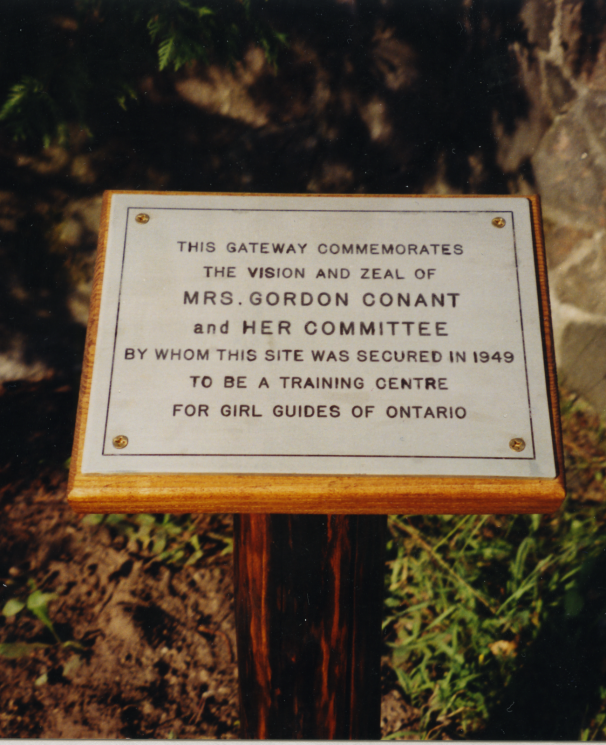 Fig. 1: Doe Lake Waterfront World Camp 1957, Postcard | Ontario Council Archives, F61-I01219
Fig. 1: Doe Lake Waterfront World Camp 1957, Postcard | Ontario Council Archives, F61-I01219
Fig. 2: Doe Lake – Postcard | Ontario Council Archives, F61-I01280
Fig. 3: Doe Lake – Gate Post Plaque | Ontario Council Archives, F61-I01289
Camp Kah-Ne-Do
Camp Kah-Ne-Do occupies 25 acres of land near Parkhill, west of London. It was purchased in 1994 to serve Trillium Area Girl Guides. The camp
is located next to Boy Scout Camp Sylvan, but has its own lodge, sheltered area, and wilderness campsite. The name Kah-Ne-Do means “among the
pines.”
 Fig. 1: Camp Kah-Ne-Do, 1981 | Ontario Council Archives, F61-l02508
Fig. 2: Camp Kah-Ne-Do Crest, ca. 1980 |
Ontario Council Archives
Fig. 1: Camp Kah-Ne-Do, 1981 | Ontario Council Archives, F61-l02508
Fig. 2: Camp Kah-Ne-Do Crest, ca. 1980 |
Ontario Council Archives
Camp Kienuka
Camp Kienuka opened on July 10th, 1963. The first camporee was held at Camp Kienuka in 1965, and it became a yearly tradition for Niagara Area
Girl Guides. The camp is situated on 14 acres of property on Lake Erie, near Dunnville, Ontario. The permanent site buildings were named after the
five Great Lakes.

Fig. 1: Camp Kienuka, 1997 | Ontario Council Archives, F61-l02666
Fig. 2:Camp Kienuka Crest, 1986 |
Ontario Council Archives
Camp Ma-Kee-Wa
The Toronto area had been expanding since the early 1950s and the camping needs could not be served by sites at Bonita Glen, Camp Samac, and
Camp Unaleyi. When 100 acres near Mono Mills in Simcoe County was put up for sale, Mrs. Eva McCutcheon, North West Area commissioner, urged
her husband to purchase it for use as a Girl Guide camp.
In 1959, Mr. Wallace McCutcheon purchased this property and it was then acquired by the Girl Guides and transformed into Camp Ma-Kee-Wa.
Camp Ma-Kee-Wa is named after the McCutcheons: Ma-K (“Mc”) EE (“Eva”) Wa (“Wallace”). Mrs. McCuthcheon wished to make the camping experience accessible to as many girls as possible, proposing:
“...to set the fee for Campers at the lowest possible level compatible with making the expenses equal to the income – to operate, in other words, without a deficit or a profit.” ~
Eva McCutcheon, May 1959

 Fig. 1: Camp Ma-Kee-Wa Postcard | Ontario Council Archives
Fig. 2: Camp Ma-Kee-Wa
Postcard | Ontario Council Archives
Fig. 1: Camp Ma-Kee-Wa Postcard | Ontario Council Archives
Fig. 2: Camp Ma-Kee-Wa
Postcard | Ontario Council Archives
Camp Orenda

Camp Orenda officially opened on November 19
th, 1976. It was acquired in order to serve the needs of the Anderson, Chapman, and
McHale divisions in Trillium Area. The camp is located on 100 acres of land in Belmont, Ontario, near London.

Fig. 1: Camp
Orenda | Ontario Council Archives, F61-l02496
Fig. 2: Camp Orenda Crest | Ontario Council Archives
Piper’s Hill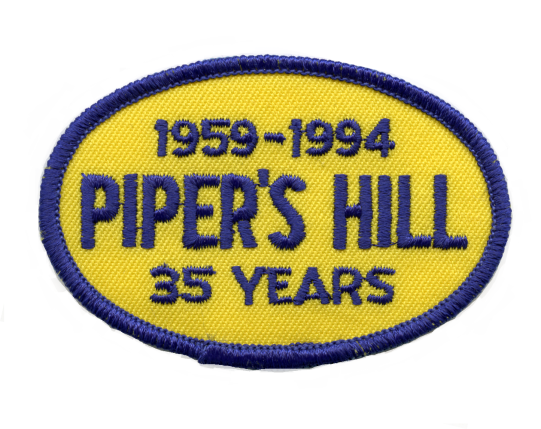
In 1959, the Etobicoke Rotary Club purchased 100 acres of land near Colgan, Ontario. They donated this property to the Girl Guides under the
condition that it be put to “satisfactory and creative use” for five years. Piper’s Hill opened June 12
th, 1960, and a two story lodge
was constructed the same year. The property deed was officially transferred to the Girl Guides in 1966 and there was a ceremonial burning of the
mortgage in June, 1970. Piper’s Hill continues to serve as a campsite for girls in the Toronto area.
 Fig. 1: Piper's Hill 35th Anniversary Crest | Ontario Council Archives, F61-
l02496
Fig. 1: Piper's Hill 35th Anniversary Crest | Ontario Council Archives, F61-
l02496
Fig. 2: Piper's Hill | Metro Beat Vol. 5 No. 3 Oct. 1972
Camp Tekahionwake (Teka)
The name “Tekahionwake” was selected through a contest held in 1952. The word means “laughing waters” and was chosen in memory of Pauline
Johnson. The camp opened in 1950, on 17 acres near Paris, north of Brantford. Renovations and construction projects took place throughout the
1960s and 1970s. In 1998 a fire devastated portions of Camp Teka’s permanent infrastructure.
The Grand River Conservation Authority advised that
developments in the surrounding area could encircle Camp Teka with subdivisions and gravel pits. Relocation of Camp Teka was considered, but it
was decided to remain at the Paris location. In 2007, the camp received a Trillium Grant, which allowed further renovations to upgrade the
existing structures.
Fig. 1: Camp Tekahionwake Crest | Ontario Council Archives
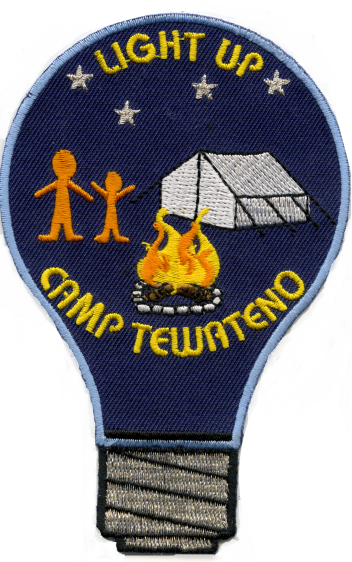 Camp Tewateno
Camp Tewateno
Camp Tewateno opened on December 16
th, 1994. The camp is located on 100 acres of land near Springwater, Ontario, and was owned by
the Champlain and Maple Leaf Divisions in Silver Birch Area. Tewateno means sisterhood in Wendat (Huron).
Fig. 1: Light up Camp Tewateno Crest | Ontario Council Archives
TRHAC 
The Rolling Hills Area Camp, TRHAC (pronounced “track”), is located near New Lowell, Ontario. The camp was opened on November 4
th,
1992 to fill the need for a campsite in Rolling Hills Area. The camp lodge was completed a year later. The property features wetlands, nature
trails, and evergreen forests.

 Fig. 1: TRHAC Where Friendships Grow, 1993-2003 Crest | Ontario Council Archives
Fig. 2: TRHAC | Ontario Council Archives
Fig. 3: TRHAC | Ontario
Council Archives
Fig. 1: TRHAC Where Friendships Grow, 1993-2003 Crest | Ontario Council Archives
Fig. 2: TRHAC | Ontario Council Archives
Fig. 3: TRHAC | Ontario
Council Archives
 Camp Woolsey
Camp Woolsey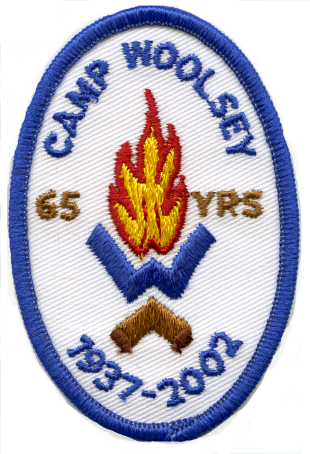
Since 1938, Camp Woolsey has served as a campsite for Guides in the Ottawa area. There is a long history of Guide camping in Ottawa; the first
Ottawa Guide camp took place in 1914 at Wychwood. Guides continued to rent sites for the next few decades. According to the Local Association
minutes, negotiations regarding a permanent campsite for Ottawa began in 1928. With the help of the Local Association, the Girl Guides were able
to purchase Camp Woolsey in 1938.
The Guides began using the site in July, 1937, with a program based around First and Second Class Tests. The
camp was officially opened on July 6, 1939 by Lady Campbell, wife of the British High Commissioner, who named it Camp Woolsey. The log cabin was
named “Pinhey Cottage” after Miss Pinhey, who had been one of the founding donors to the camp.
Camp Woolsey has been host to a number of important visitors including H. R. H. Princess Alice who visited with
her family in the summer of 1940, and Betty Clay, the youngest daughter of Lord and Lady Baden-Powell, who visited in 1985.
Fig. 1: Pinhey Cottage - Camp Woolsey | Ontario Council Archives
Fig. 2: Camp Woolsey 65th Anniversary Crest | Ontario Council Archives
Camp Wyoka
Camp Wyoka opened on July 24
th, 1965. The name “Wyoka” is an acronym for White Oaks Area. The camp is located on a 100 acre property in Clifford, Ontario.
Carlyle Lodge was completed in 1963, although it was not dedicated until 1979. The name honours Tom and Helen Carlyle, supporters of the camp.
The other permanent camp sites, Cedarbrae and Tamarak were opened in 1971. Camp Wyoka hosted three International Centennial Camps in 1967.
York Division joined White Oaks Area in 1972. The division funded a new cabin, York House, in 1973, which allowed the camp to support the increased attendance from York Division Guides. The camp has since been host to thousands of girls from all across Southern Ontario.
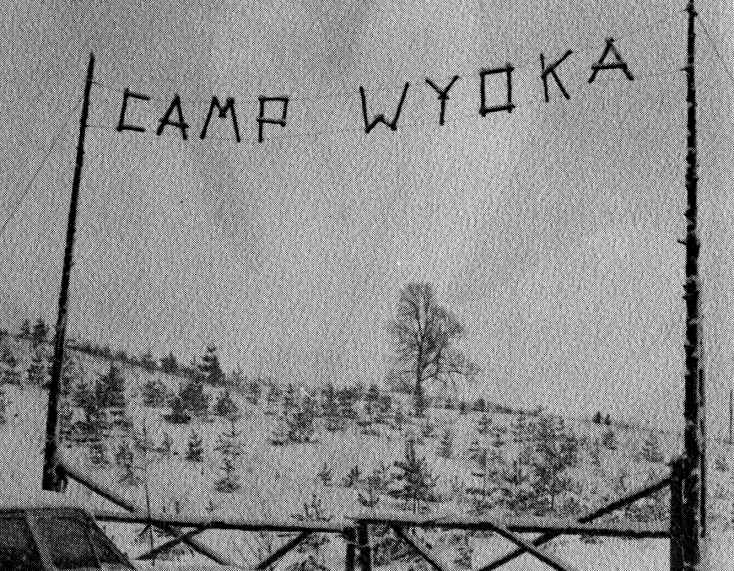 Fig. 1: Camp Wyoka 1967 Crest | Ontario Council Archives
Fig. 2: Camp Wyoka
Promotional Pamphlet | Camp Wyoka
Fig. 1: Camp Wyoka 1967 Crest | Ontario Council Archives
Fig. 2: Camp Wyoka
Promotional Pamphlet | Camp Wyoka